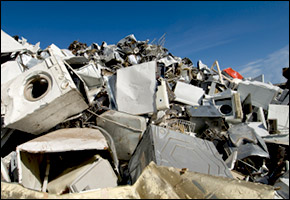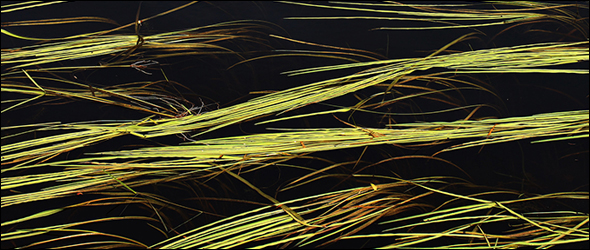Peter Gleick: Get Rid of Your Clunker

More on Inefficient Washing Machines (and Toilets and Irrigation Systems)
Some readers of my last post, on inefficient washing machines, got a bit testy. I’ve blogged on water as a human right, climate change, improving efficiency of water use in agriculture and cities, international conflicts over water and more. But what post led to the most, and the rudest comments? My recommendation that people replace inefficient washers with efficient washers? So, in response to the “push back,” let me push back again with more facts. [And be civil: if you can’t have a polite discussion about washing machines (or toilets or irrigation systems), what hope do we have for healthcare?]
Let me say right off the bat that if you don’t want to replace your inefficient washing machine, fine. Don’t. It’s a free country, which means you’re also free to waste money and resources if you want. But know your options, and pay for your waste by paying the full cost of water, energy and environmental damages. The good news is we have good options for efficient machines.
Some people love their old top-loaders because they think the old machines are more durable. Ok, believe that. Actual studies show they are equally reliable, though front-loaders are actually less complicated mechanically. And for every one of you with an old machine that still works, there are 10 others whose machines died years ago because they just gave up the ghost or they were pieces of %!*$#*!.
Some people believe that new efficient machines don’t clean as well. There is no evidence to support that either, and plenty of evidence to contrary, including Consumer Reports and other reviews. Can you buy a badly made front loader? Or a lemon? Sure. But do your research and buy a good one and operate it properly. You can buy a crappy toaster that burns your toast and breaks quickly, too.
A couple of people complained that their backs hurt bending over to put clothes in the front. Holy cow, either get the little stand that the companies make to raise the machines up a little higher or get more exercise. Ironically, I used to hurt my back bending over to dig the heavy wet clothes out of my old top-loader all the time.
A few people noted that front-loaders seem more susceptible to mold than top loaders. There is a good forum on this at Consumer Reports, but the bottom line is that these are rare problems and easy to either avoid or fix.
Some commenters complained that front-loaders are more expensive than top-loaders. First, over their lifetimes, front-loaders are cheaper, and that’s what counts. You have to count the savings in energy, water, and detergent, or you’re only counting part of the costs. But even more importantly, the cost difference is disappearing. Again, Consumer Reports notes that front-loaders are not necessarily even more expensive to buy anymore. Shop around. And many water utilities and electric utilities offer rebates that cut the cost even more. Here is a cool website to help you find these rebates.
Some people complained that they shouldn’t be asked to replace an old inefficient machine before the end of its natural life — what a waste of materials, money and so on. In fact, California banned dumping old appliances in landfills as of January 1994, and old appliances are recycled for their metal. But if you want, go ahead and wait until your old one dies and then buy a new efficient one. But inefficient machines that haven’t broken down yet should be replaced early if they are old enough or inefficient enough. Just because it still works, doesn’t mean you won’t save money by buying a new one. That is the entire purpose of the hugely successful voluntary “cash for clunkers” program for old, polluting and inefficient automobiles. Congress just added $2 billion in emergency funding to continue a program to get old, inefficient automobiles off the road in their “cash for clunkers” program. The first $1 billion disappeared incredibly fast because the program was so popular. Getting rid of these cars saves energy and air pollution, and it probably does more to save the car industry than any other part of the stimulus.
So my Water Number today: $2 billion
I urge Congress to provide $2 billion for an emergency “Cash for Water Clunkers” program for inefficient washing machines and toilets and other water-using appliances. The money should go to homeowners who replace and recycle certain truly inefficient things — the oldest and most wasteful models — with Energy Star and Water Sense rated models. And a comparable program should be put in place for farmers who want to replace old inefficient irrigation systems, but can’t find the initial capital to do so. We made this recommendation in our new agricultural efficiency study.
Finally, if you just have to have a top-loader, for whatever reason, that’s fine too: even the new top-loaders are more efficient than the old ones.
Dr. Gleick’s blog posts are provided in cooperation with the SFGate. Previous posts can be found here.










Leave a Reply
Want to join the discussion?Feel free to contribute!